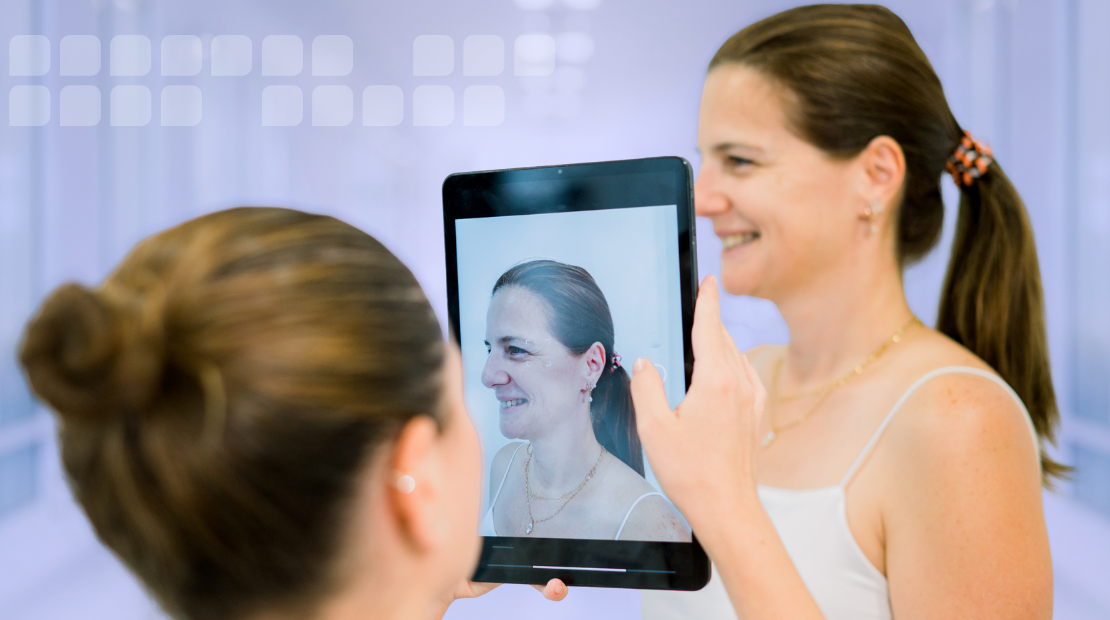Table of Contents

Nowadays, the liberating possibility of a paperless clinic is more real than ever. Digital apps and technology have seeped into diverse dimensions of everyday life, particularly with respect to the management of health and wellbeing.
In the last few decades, the medical world has undergone staggering advances in the use of technology in medical imaging, surgery and patient management. More specifically, in aesthetic clinical settings, embracing the shift to specialized software means a more effective and functional workplace, less margin for error and miscommunication in patient record keeping, more time for meaningful interaction with your patients and most significantly, an enhanced patient experience.
Software specially developed for aesthetic clinics has advanced and expanded in recent years to comprehensively cover most aspects of the aesthetic surgical experience, together with the management and treatment of clients.
Private healthcare clinics such as cosmetic surgeries, dermatologists, laser clinics and medispas are all increasingly turning to medical spa software that meets and caters to their specific needs–notably photographic documentation software that is absolutely crucial to the business of aesthetics.
Here, we will briefly explore what aesthetic software can offer you and your clinic, its benefits, and explore one cutting edge example: RxPhoto.
Bailey, T. (2007). Record-keeping in primary care: Benefits of an electronic system. Canadian Family Physician, 53(9), 1617. Retrieved from https://www.ncbi.nlm.nih.gov/pmc/articles/PMC2234646/
What can aesthetic clinic software offer your clinic?
Specialized software for aesthetic clinics can be loosely organized into two main categories: customer relationship management tools (CRM tools) and electronic medical record tools (EMR tools).
CRM tools streamline and organize clinical processes making the customer experience more pleasant and efficient (and more simplified for you and your staff), while EMR tools hold a range of functions, such as minimizing deviations from protocol, or ensuring a more robust auditing system.
The two can be combined to improve all aspects of your clinic: the maintenance and management of clinical data, as well as more business-oriented elements such as marketing and reporting.There is a diverse range of software available to effectively streamline and manage your clinic. Furthermore, the majority of the medical spa software available can be tailored to meet your specific needs–or you can combine different software packages to create the perfect paperless system.
Some of the bases covered include:
- Templates for patient forms.
- Digital signatures.
- Interactive patient records and images.
- Administration tools.
- Form editing tools.
- Electronic record kiosks.
- Secure online client portal access.
- Photo and document uploads.
- Client milestones.
- Cloud-based photo storage.
- Organization of photographic records based on categories such as series, date or procedure.
- Photo editing tools.
- Optimization and standardization of photographic documentation.
However,you should always ensure that any software you consider purchasing for your clinic is HIPAA (Health Insurance Portability and Accountability Act) compliant.
Four ways that your practice stands to benefit from using software specifically designed for aesthetic clinics.

1. Increased accuracy.
One of the most appealing aspects of using specialized aesthetic clinic software is the increased capacity to accurately highlight where and when things have gone wrong in the rare instance that they do, and consequently improve on processes and patient care. Filing and managing paperwork for tens of thousands of patients can be challenging to say the least.
2. More comprehensive and up-to-date patient records.
As medicine and healthcare grows in its complexity, the potential to do good but also inadvertently cause harm increases. Individuals in industrialized Western societies are nowadays more likely to receive care in a wider variety of clinical settings. EMR tools help ensure that current information about patients’ medications, allergies, test results and health histories are updated in real time. These help reduce the risk of harm to patients through inadvertent omission.
3. Improved record keeping.
From a legal perspective, there is a higher chance of being charged with medical negligence in a malpractice case if the practitioner has not been as scrupulous with record keeping as he or she could have been. Moving to digitized client records can eradicate problems with incomplete or missing paperwork and allow for more thorough recorded detail, helping to guarantee your client’s safety and your own professional reputation.
4. Increased business through the integration of professional-quality photographs.
Aesthetic software such as RxPhoto facilitates patient photographs to become a vital part of patient records, renders them easily accessible and able to be updated with notes.
For aesthetic clinics, emphasis on the visible is fundamental. Professional quality before and after photos are crucial to attracting clients: 80% of clients view before and after photos before undergoing a procedure, and 75% of consumers researching plastic surgery declare that they would not consider a practice that does not showcase before and after photos.
Photos effectively form a bridge between the medical speak of surgeons and practitioners, and the expectations and beliefs of patients. They can simultaneously help to manage and temper clients’ expectations, but also highlight what can be achieved.
RxPhoto: A cutting edge example of aesthetic clinic software
RxPhoto is an economical, user-friendly yet impressively sophisticated clinical photography suite.The user selects photography areas from a predefined list of anatomy. Patient photos can then be easily captured using an iPhone, iPod or iPad as a tool. They are stored and can be identified by anatomical area, the date the photo was taken, photographer, notes and more, and are sent to a HIPAA compliant Cloud-based photo manager which optimizes and standardizes the photos.
Expensive and complex photography equipment is therefore made redundant, and effectively photographing patients for baseline shots, and before and after photographs, is easier than ever before.
Rx Photo software boasts diverse features to facilitate capturing, cataloguing and managing patient photographs:
- New patient profiles can be created from your mobile
- Anatomical regions can be selected from standard or customized anatomy lists
- On-screen photo templates, a leveling tool and photo ghosting features offer a replicable process for consistent before and after photos
- Drawing and illustration tools allow you to visually annotate images and add notes
- Injection tracking tools helps accurately document injectable and filler applications
- Customizable diagnosis and treatment tags can be added to photographs
- Reports can be generated directly from your mobile for patients or insurance purposes
- Customizable consent forms can be signed with a fingerprint on your mobile device
- Patient photos can be searched by notes, tags or encounter dates
- Photos can be shared with patients or referring physicians via a HIPAA compliant web portal
The final word
The integration of software specifically designed for aesthetic clinics into your practice can dramatically transform how you manage and treat patients, and the general success of your business. If you haven’t already, now is the time to take advantage of the diverse specialized software options available.
Are you struggling to take high-quality and consistent before and after photos?
Check out our whitepaper on

Scott Alten
Managing Partner – RxPhoto



